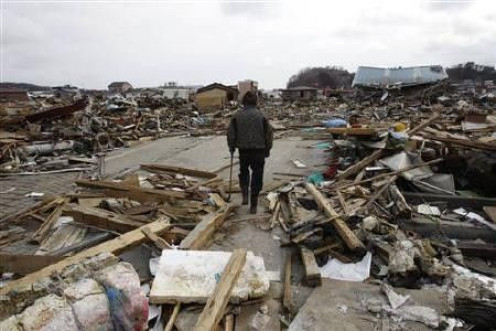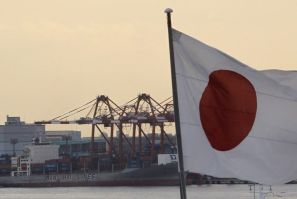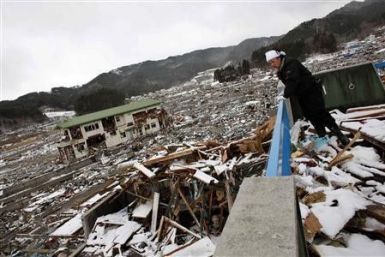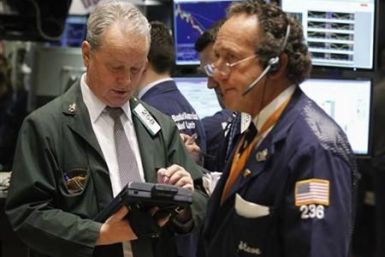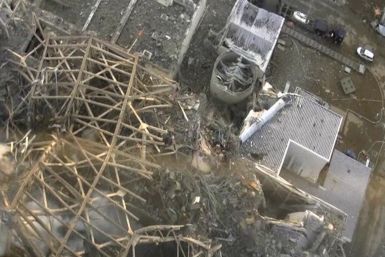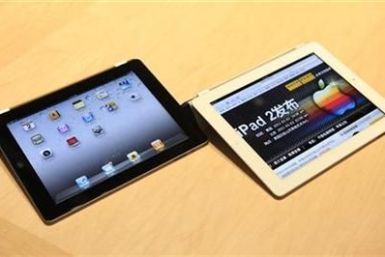Starting April 3, just after the Fools Day messages, Twitter this week gave more than the expected momentum to some top news which would have missed the limelight had Twitter been not there.
The aftershocks of the Tohoku earthquake that rocked Japan Thursday night have caused spills of radioactive water and power losses at no less than three different nuclear facilities.
Almost a month after the massive 9.0 magnitude earthquake and subsequent tsunami hit Japan, a second earthquake struck the north-eastern coast of the country on Thursday.
A giant island of earthquake-tsunami debris is floating in the sea and will hit the Hawaiian islands in the months to come, researchers have said, according to CNN.
U.S. stocks ended lower on Thursday after a major aftershock in Japan triggered new fears about a nuclear crisis, but better-than-expected jobless claims data and monthly retail sales data held losses in check.
Although the social media has not yet exploded with the pictures and videos of the latest earthquake in Japan, a home footage of the April 7 quake has hit YouTube.
Radiation levels inside the Onagawa nuclear plant in the Miyagi prefecture, north-east of Japan, rose slightly as water spilled out of spent fuel pools after a strong 7.1-magnitude aftershock hit the region on Thursday night. But the company that runs the plant said there was no rise in radiation levels outside the plant.
In what would have been a scary repetition of the tragedy that unfolded after the quake-tsunami last month, two out of three power lines to Japan's Onagawa nuclear plant were knocked out in the fresh aftershock that occurred in Japan's north-east on Thursday night.
A 7.4-magnitude earthquake hit Japan at 11:32 p.m. local time on Thursday in the same area as the initial March 11 9.0-magnitude earthquake killing two people and injuring more than 100in the northeastern Japan.
A 7.4-magnitude earthquake hit Japan at 11:32 p.m. local time on Thursday in the same area as the initial March 11 9.0-magnitude earthquake killing two people and injuring more than 100in the northeastern Japan
Japan hasn't stopped with aftershocks since the 9.0 magnitude earthquake that occurred on March 11th, with today marking the largest aftershock to date.
A 7.1-magnitude earthquake hit Japan at 11:32 p.m. local time on Thursday in the same area as the initial March 11 9.0-magnitude earthquake. It was the largest aftershock to date.
U.S. stocks declined on Thursday after reports of another earthquake hitting Japan in less than a month, but markets were off their lows after a tsunami warning was lifted.
Japan’s NHK World TV reported that all tsunami alerts in the country have been lifted, following a 7.4-magnitude earthquake that struck off the ruined northeastern coast.
Japan’s NHK public television has reported that today’s earthquake off the coast of northeast Japan has not caused any additional damage to the Fukushima nuclear power plant, quoting the Tokyo Electric Power Co. (TEPCO).
High Tide Time and Estimated Tsunami Arrival Time at each place
Another massive earthquake measuring 7.4 on Richter hit Japan with the epicenter about 250 miles from Tokyo.
Deutsche Bank has cut its profit estimates of online retailer Amazon , citing impact from Japan earthquake and tsunami.
Shares of Delta Air Lines Inc. (NYSE: DAL) touched a new 52-week low of $9.31 on Wednesday. The company said its load factor for the month of March declined 4.5 percentage points to 79.7 percent from 84.2 percent last year.
UN atomic watchdog International Atomic Energy Agency has released the following update on the status of Fukushima Daiichi nuclear plant.
The ship times for the chronically out-of-stock Apple iPad 2 have improved of late, offering hope to enthusiasts who haven’t had a chance to own one so far.
Apple's iPad 2 could face some production issues due to shortage of touch screens as some of the producers of those distinct screens were hurt by the Japan earthquake





